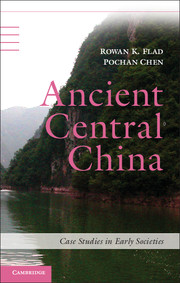Book contents
- Frontmatter
- Contents
- Figures
- Tables
- Boxes
- Acknowledgments
- 1 Introduction: Centers and Peripheries in the Ancient Yangzi River Valley
- Part I Setting the Stage
- Part II Political and Cultural Topographies
- Part III Topographies of Economic Activity and Ritual
- 7 Economic Topographies: Production, Exchange, and the Integrating Role of Salt
- 8 Ritual Topographies: Sacrifice and Divination
- 9 Ritual Topographies: Burials and Social Identity
- 10 Conclusion: Landscapes of Interaction and the Interaction of Landscapes
- Glossary
- Bibliography
- Index
10 - Conclusion: Landscapes of Interaction and the Interaction of Landscapes
Published online by Cambridge University Press: 05 February 2013
- Frontmatter
- Contents
- Figures
- Tables
- Boxes
- Acknowledgments
- 1 Introduction: Centers and Peripheries in the Ancient Yangzi River Valley
- Part I Setting the Stage
- Part II Political and Cultural Topographies
- Part III Topographies of Economic Activity and Ritual
- 7 Economic Topographies: Production, Exchange, and the Integrating Role of Salt
- 8 Ritual Topographies: Sacrifice and Divination
- 9 Ritual Topographies: Burials and Social Identity
- 10 Conclusion: Landscapes of Interaction and the Interaction of Landscapes
- Glossary
- Bibliography
- Index
Summary
Over the course of this book, we have seen that areas that were peripheral to political topographies in Central China, such as the Three Gorges region, could nevertheless be important nodes in production and trade and were central locations in the process by which cultural identities were formed. In particular, the production and distribution of salt were responsible for bringing the people of the Three Gorges into increasing communication with communities farther away. The people who produced and traded salt in this area interacted with people in the Shu region to varying degrees and, as the burial data show, were part of a network of communities that was gradually penetrated by members of a Chu diaspora. By examining this region through the lens of multiple conceptual topographies, we gain a perspective that is lost when political peripheries are marginalized. This realization emerges through the process of bringing the political periphery of Central China to the fore.
As has been noted for other regions of the world, “peripheries situated between cores were far from helpless in dictating the terms of exchange” (Kohl 1987b: 20) or the nature of other forms of interaction with distant regions. This understanding has caused a shift in recent scholarship toward trying to understand the roles that political peripheries played in political change. Lyons and Papadopoulos (2002a: 7), for example, have noted that “scholars [have] turned from examining centers to peripheries, the marginal spaces where difference is negotiated and where actions and expectations take on new senses. The periphery, of course, is not an external geographical point but represents those borderland settings in which meanings are displaced and reinvented.” A focus on so-called far peripheries is, therefore, an essential part of any attempt to understand social change and regional relationships (see Hall 2000: 237).
- Type
- Chapter
- Information
- Ancient Central ChinaCenters and Peripheries along the Yangzi River, pp. 279 - 286Publisher: Cambridge University PressPrint publication year: 2013

